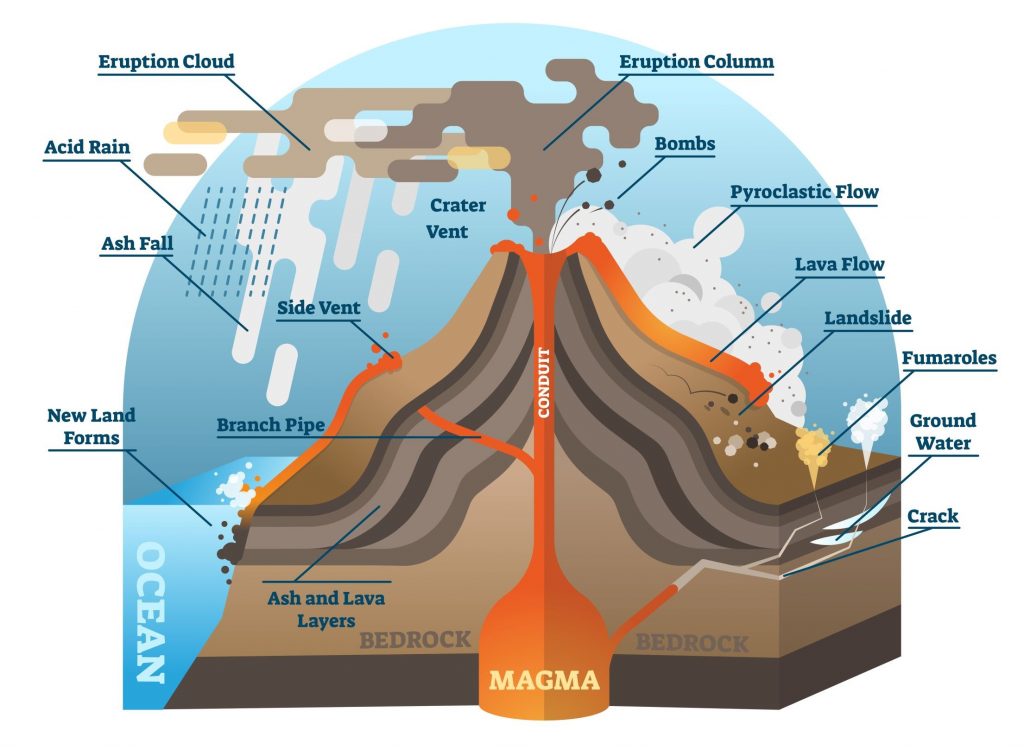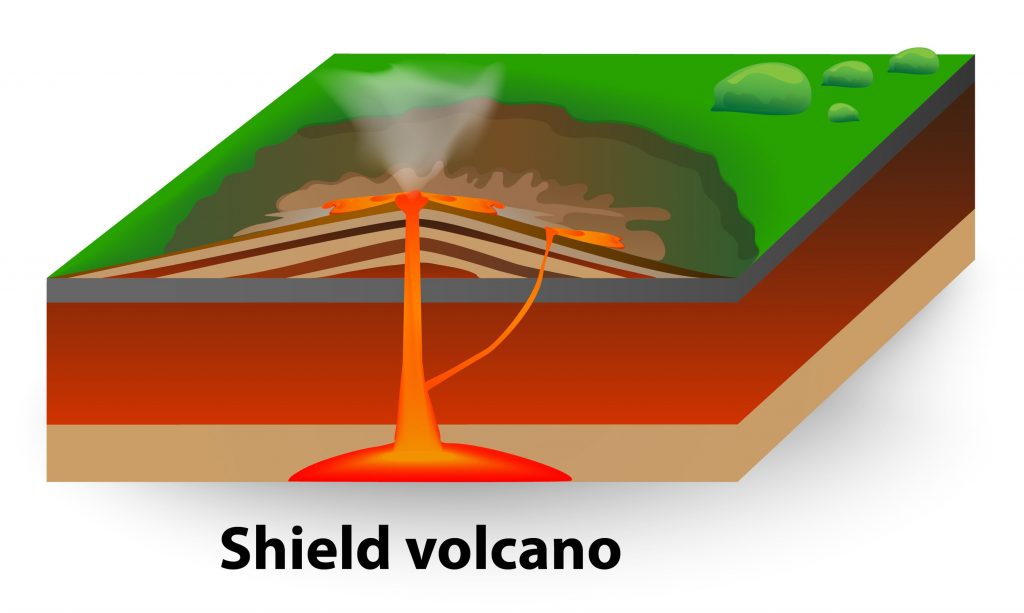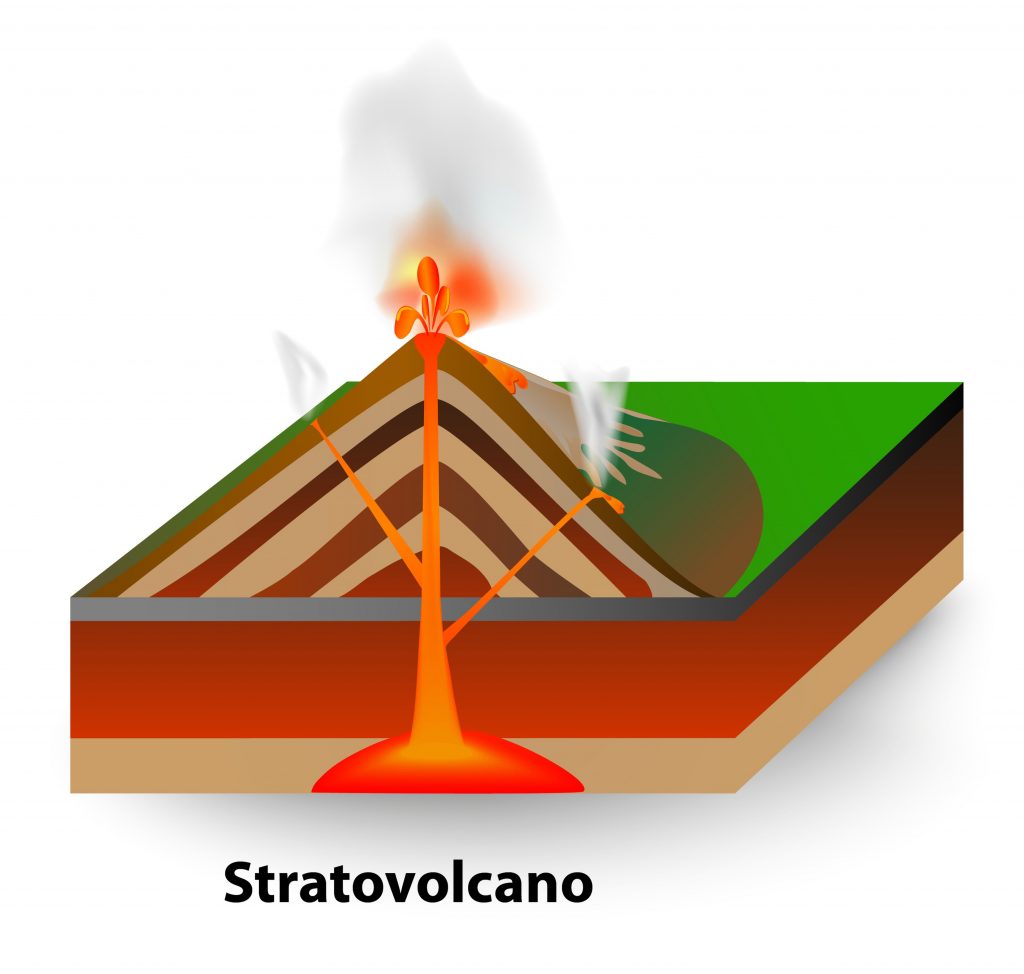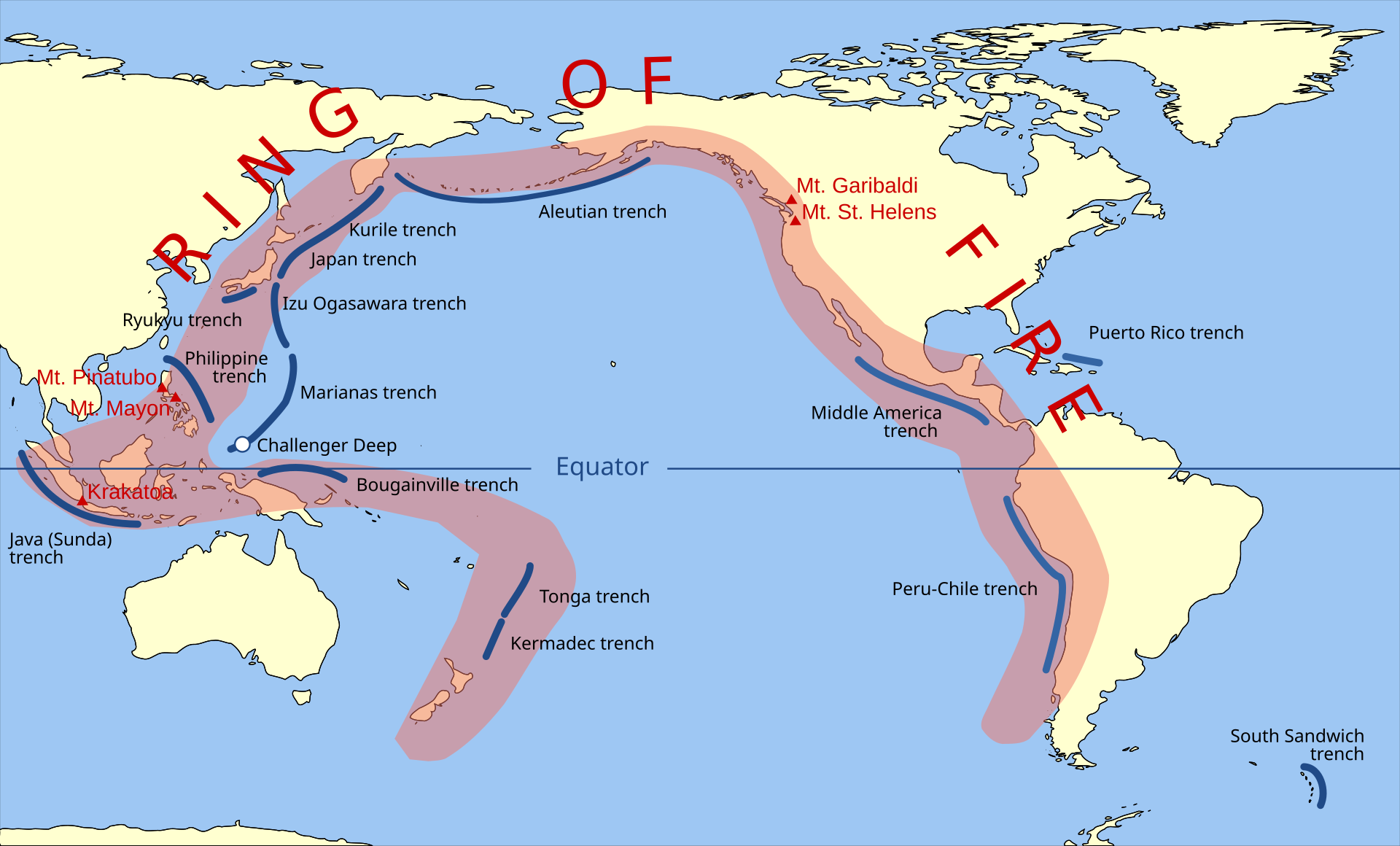A volcano eruption occurs where there is a break in the earths crust, hot lava, volcanic ash, and gases escape from a magma chamber below the surface. Volcanic Eruptions have been releasing molten rock, hot ash, and gas since Earth formed billions of years ago.
More than 80 percent of the earths surface has been created by volcanic eruptions, ultimately allowing life to evolve.
Features of a Volcanic Eruption

Volcanic eruptions can be explosive and produce dangerous lava flows, poisonous gases, and flying rocks and ash. Many volcanic eruptions are also associated with other natural disasters, including earthquakes, landslides, debris flows, flash floods, fires and tsunamis.
Types of Volcanic Eruptions

A shield volcano is a wide volcano that has shallow sloping sides. They are formed by repeated lava flows. The lava has a low viscosity which means it flows easily. Shield volcano are named for its low profile that resembles a warrior’s shield lying on the ground.

A stratovolcano is a tall, conical volcano composed of layers of hardened lava, tephra, and volcanic ash. They are characterized by a steep profile and explosive eruptions. The lava that flows from these volcanoes is highly viscous, which means it flows slowly, and cools and hardens before spreading very far.
The Ring of Fire occurs where the Pacific Plate meets many surrounding tectonic plates and is the most seismically and volcanically active zone in the world. The Ring of Fire is made up of a series of oceanic trenches and volcanic arcs caused by plate movements. It has 452 volcanoes, more than 75% of the world’s active and dormant volcanoes.


